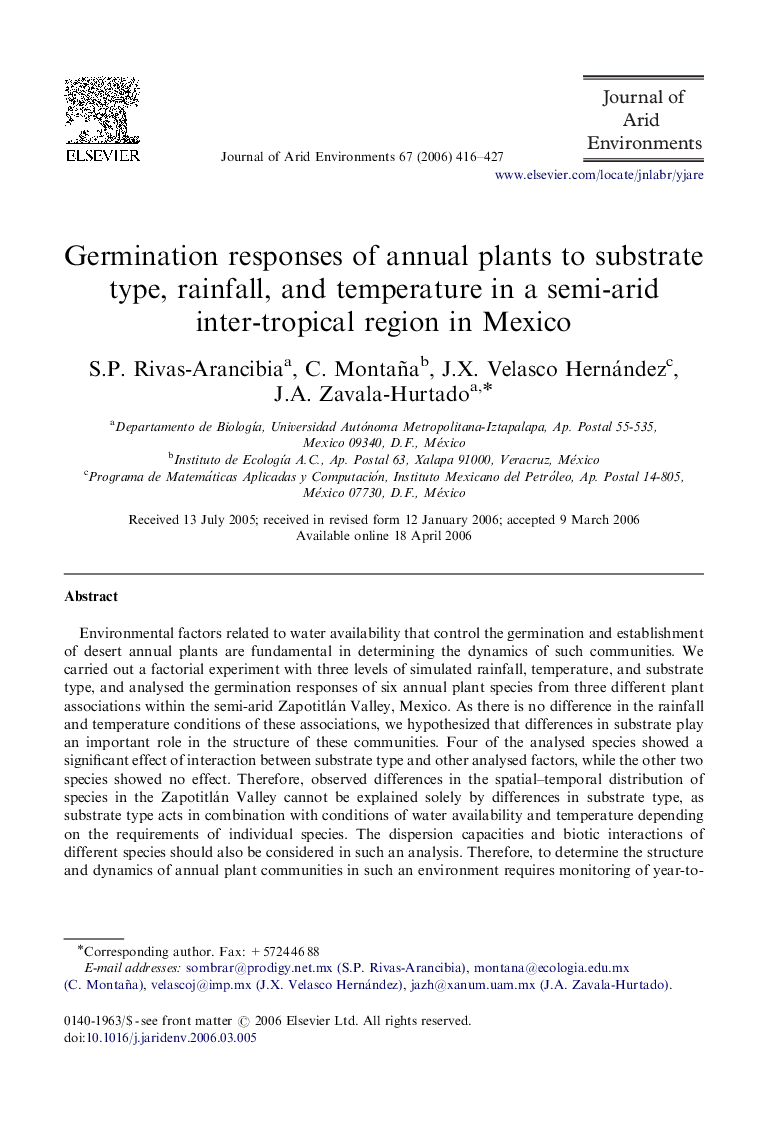| Article ID | Journal | Published Year | Pages | File Type |
|---|---|---|---|---|
| 4394576 | Journal of Arid Environments | 2006 | 12 Pages |
Environmental factors related to water availability that control the germination and establishment of desert annual plants are fundamental in determining the dynamics of such communities. We carried out a factorial experiment with three levels of simulated rainfall, temperature, and substrate type, and analysed the germination responses of six annual plant species from three different plant associations within the semi-arid Zapotitlán Valley, Mexico. As there is no difference in the rainfall and temperature conditions of these associations, we hypothesized that differences in substrate play an important role in the structure of these communities. Four of the analysed species showed a significant effect of interaction between substrate type and other analysed factors, while the other two species showed no effect. Therefore, observed differences in the spatial–temporal distribution of species in the Zapotitlán Valley cannot be explained solely by differences in substrate type, as substrate type acts in combination with conditions of water availability and temperature depending on the requirements of individual species. The dispersion capacities and biotic interactions of different species should also be considered in such an analysis. Therefore, to determine the structure and dynamics of annual plant communities in such an environment requires monitoring of year-to-year variations in rainfall, and temperature in the context of a heterogeneous micro-topographic framework in which different soil types form a complex mosaic.
